

He 162A-2

The Heinkel He 162 was unusual from the respect that only 74 days elapsed from the time the contract was signed till the first flight. Certainly a record not likely to broken. It was built in response to a call for a simplified aircraft on September 8, 1944. Although six other firms were asked to submit proposals, only Heinkel had the capacity due to the shut down of the He 177 program. Ten weeks after receiving the order the prototype made its first flight of 12 minutes. The only problem was the loss of the skin from a wheel cover due to glue failure. Unfortunately not enough attention was given to this problem and the prototype crashed four days later due to another glue failure, this time it was a wing leading edge.
Full scale production began in January of 1945 with 100 aircraft planned for February. By wars end production was well underway at both above ground and under ground facilities. The He 162 had a fuselage made of Aluminum with steel fittings, the one piece wings were made of wood, The elevators were aluminum while the rudder, ailerons, rudder and landing flaps were made from beechwood. The aircraft was relatively free from problems, those that did exist were corrected by increasing the span of the elevators and rudder by 10%. The wingtips were drooped to reduce the rolling moment induced by side slip but this was later found to be unnecessary with a reduction of the wing's dihedral. The high fuselage mounted engine had the advantage of preventing foreign objects from be ingested while on the runway and left no scorch marks on the ground making dispersed airfields harder to spot. Its disadvantages included extremely poor aft view, the necessity of using an ejection seat and the possibility of having the engine end up on top of the pilot in case of a rough landing.
Two gruppen were equipped with the aircraft, each receiving around 50 aircraft. Their first mission was flown on April 26 of 1945 and on May 4 one of them succeeded in shooting down a Typhoon. The rush to large scale production brought with it some inadequacies including speed restrictions for the engines. Fuel shortages prevented full usage and on May 8, 1945 the two groups handed over their aircraft to advancing British forces. To consider the aircraft a failure would be unfair for had the proper equipment, fuel and training been available they would have been operating a fully mature aircraft by August of 45. Post war test flights by Eric Brown, the premier British test pilot brought about mostly praise for the flying characteristics of the airplane.
The Kit
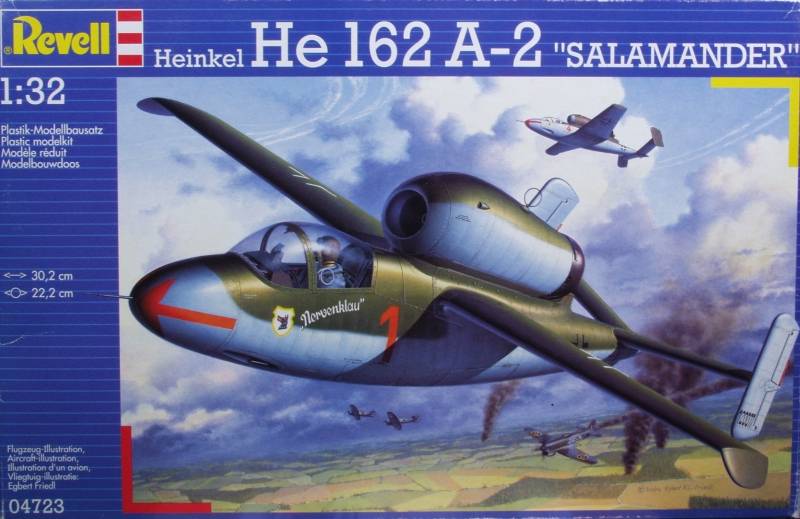
The Revell kit come in one of their unhandy end flap boxes made from thin cardboard with reasonably nice artwork on the front. Inside the box one finds a large bag containing all the kit parts. The kit is presented on four sprues of a pale gray green color. The parts have a glossy finish and feature recessed panel lines and raised detail as applicable. The parts are all but flash free with only a hint of mold parting lines to clean up. The kit was originally released in 2004 but I don't know if my kit is from the original release or not as there was no date on the box. Other than scuff marks from all the parts being in one bag I found no surface defects on any of the airframe parts. All of the control surfaces are molded in the neutral position and the hinge lines nicely represented. Fortunately the clear parts were bagged separately
The fuselage has detail molded in the side walls of the cockpit area. It looks like Revell did a nice job of keeping ejector pin marks out of areas that will be seen. The cockpit is reasonably well appointed and should suffice for most modelers. The seat has belts and harness molded on but they appear a bit small. The instrument panel has raised bezels with internal instrument detail. The main and nose wheel bays are also well detailed. As with many tricycle geared planes it will need weight in the nose to keep it from being a tail sitter. The instructions call for 45 grams. The engine is fairly well detailed but if you intend to display it with the cowling open a bit more detail might be warranted. The wheels are molded in halves and are not weighted. The canopy can be posed in the open position if desired. OK, lets look at the plastic.
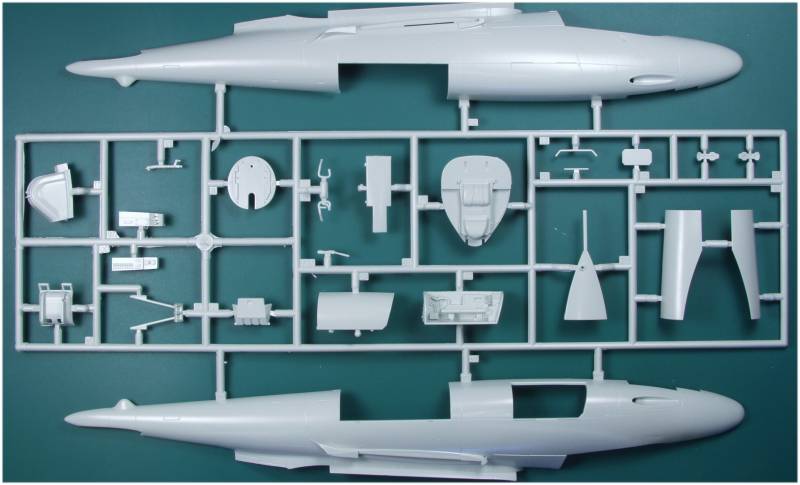
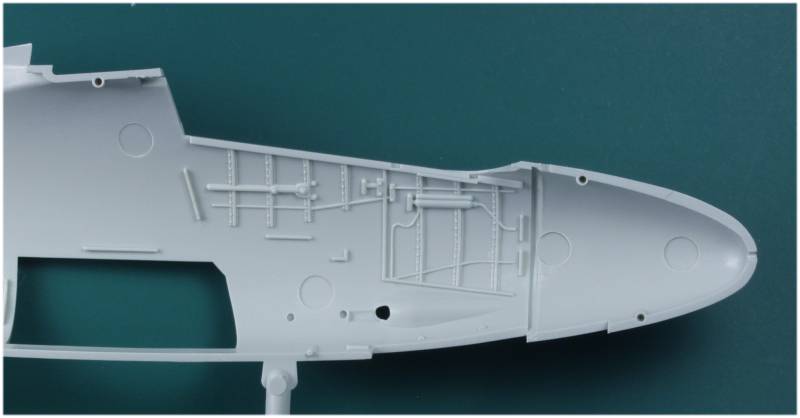
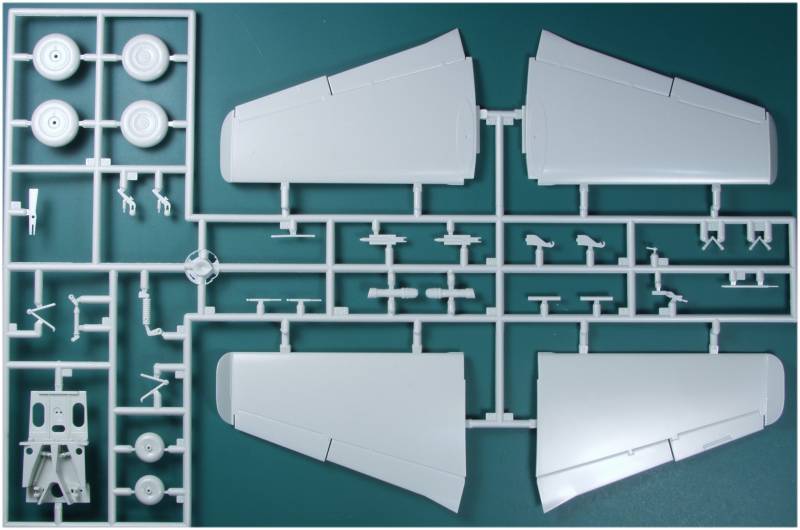
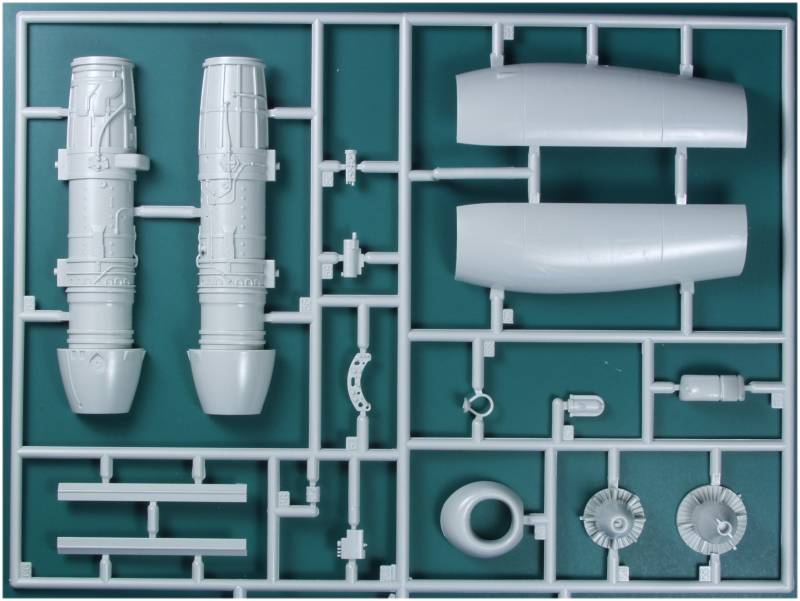
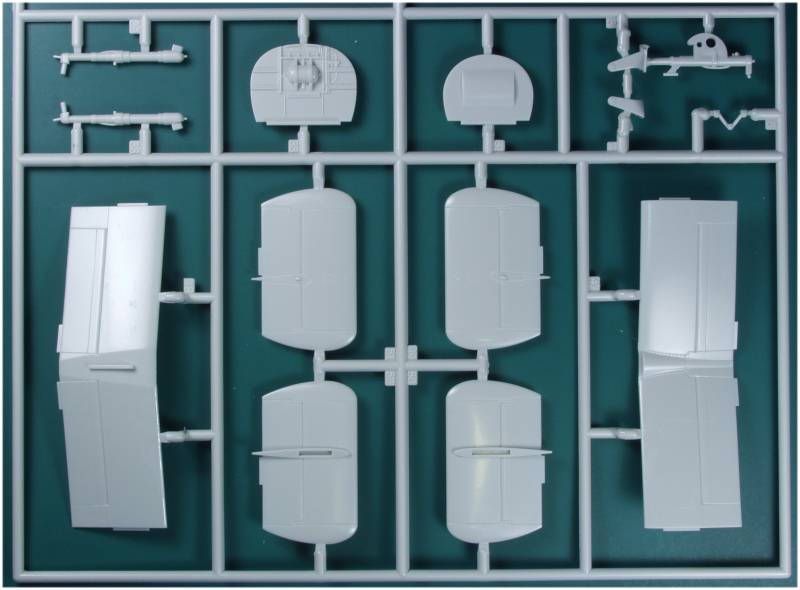
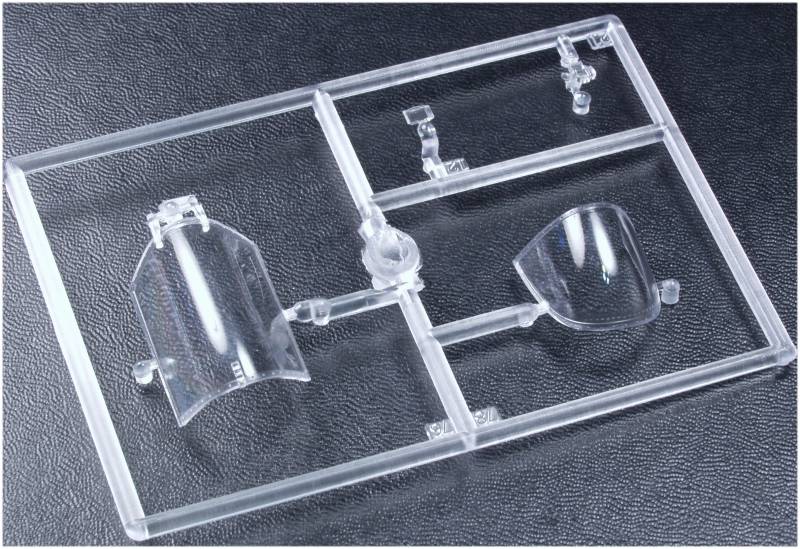
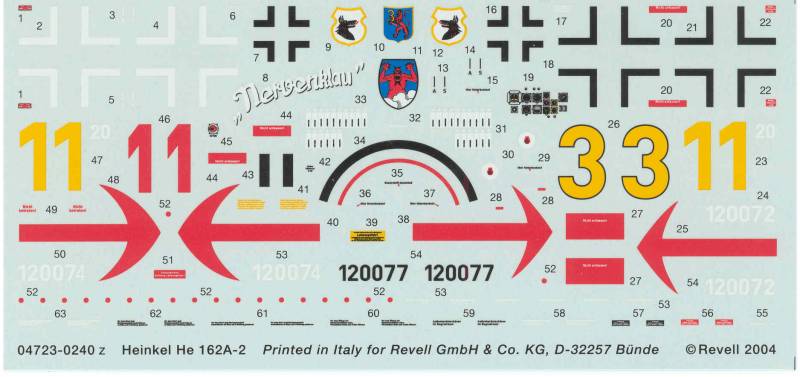
The instructions are a non stapled booklet 14 pages long. It includes history in English and German, the usual safety warnings and icon charts and a parts map. The paint chart references only Revell paint numbers and generic color names with many of the colors requiring mixes. The assembly is broken down into 42 steps and there are three pages of painting and marking diagrams.
After Market Goodies
Shortly after acquiring this kit I got the Airwaves set (AES32008)for it. It consists of a resin seat, rear bulkhead, a set of wheels that are slightly weighted and a small fret of color photo etch with seat belts, made by Eduard. The seat and bulkhead although showing some flash are better detailed than the kit parts. The seat does have a fairly large casting block to remove. There were no short shots or pin holes found on my set. It comes with an A4 sized sheet of instructions printed in color with some photos of the actual seat.
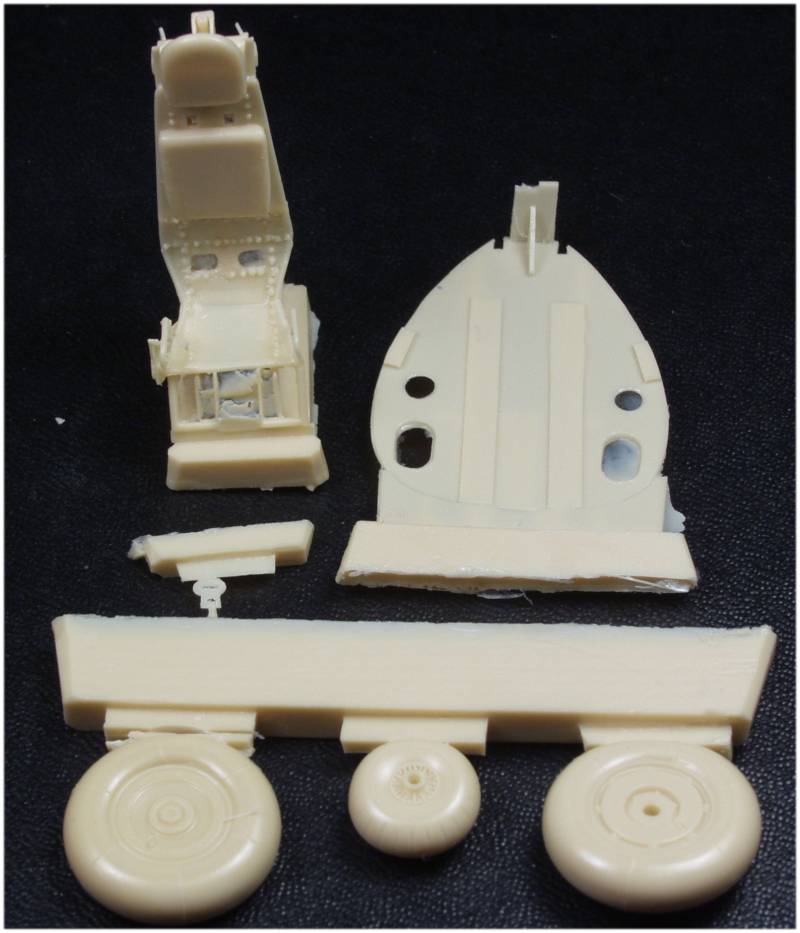
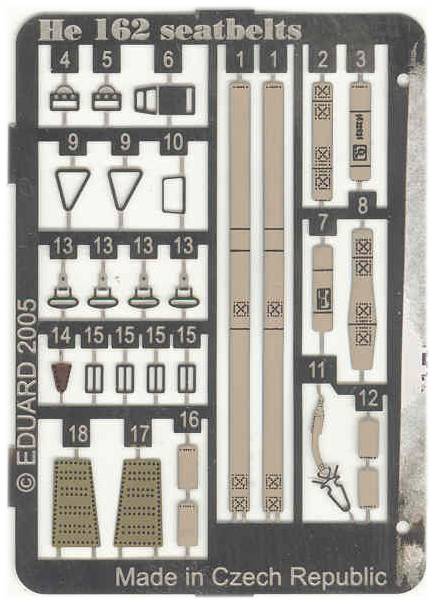
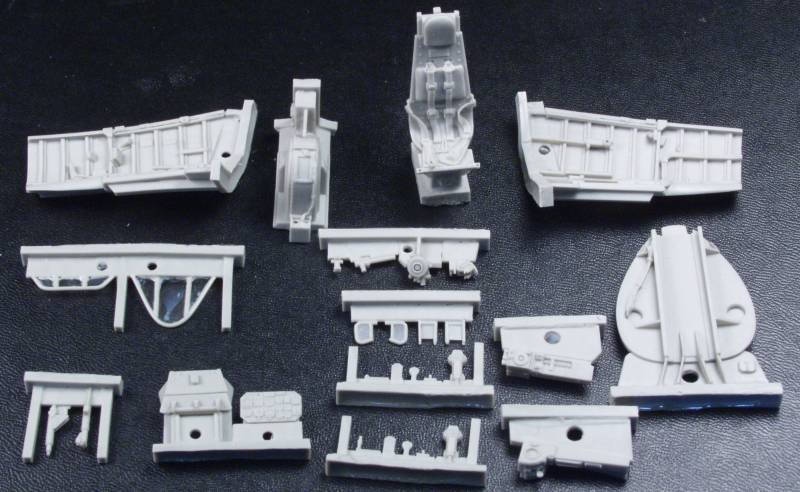
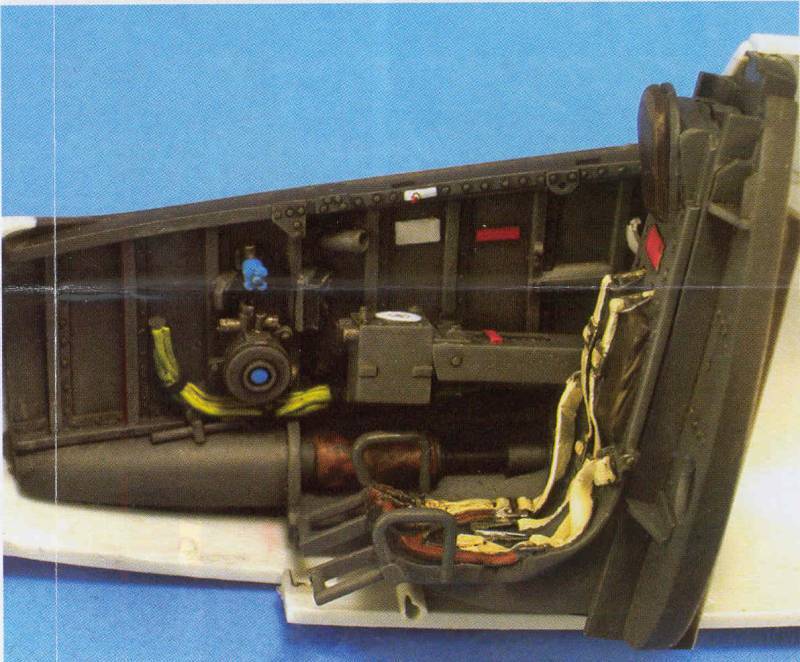
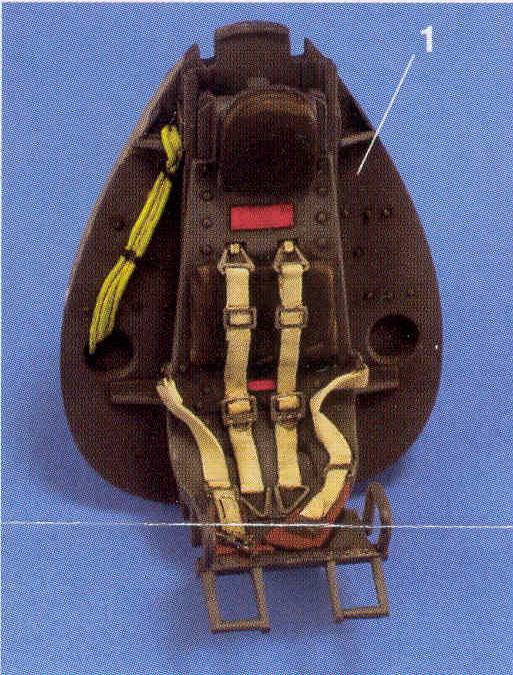
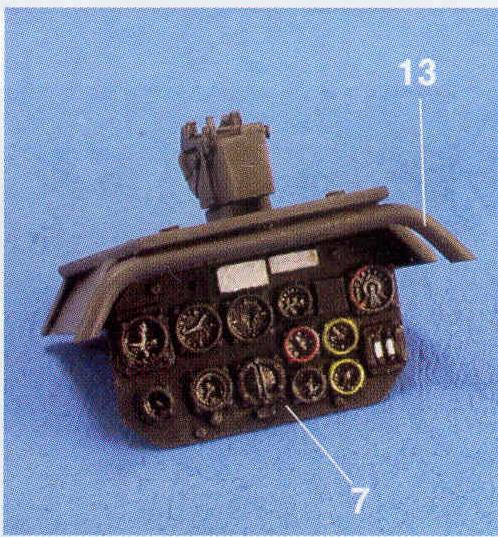
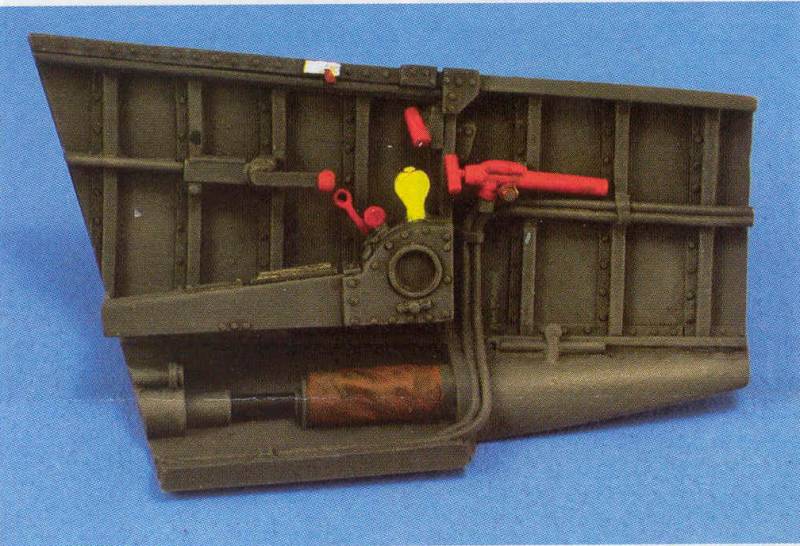
Conclusions
This is a really
nice kit, it is simple to build and fits well. The supplied parts will
be more than adequate for most modelers and after market is available
for those who want more detail. Recommended for all skill levels of
modelers.
Links to kit build or reviews
A review / build can be found here.
References
"The First Jet Aircraft" by Wolfgang Wagner
Back to the 1/32 German Aircraft Page
Updated 9/24/14